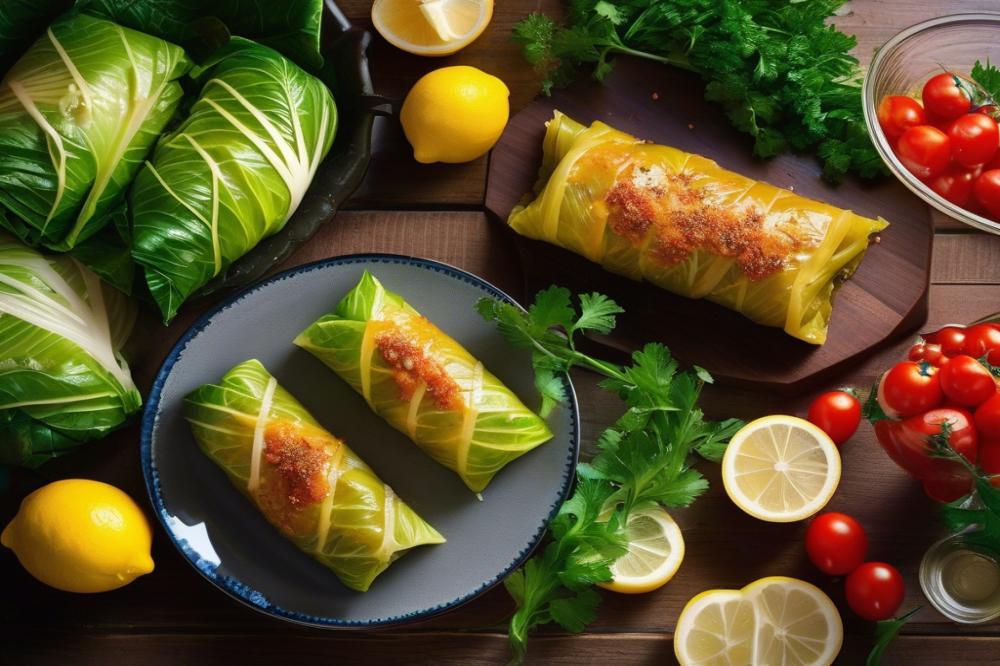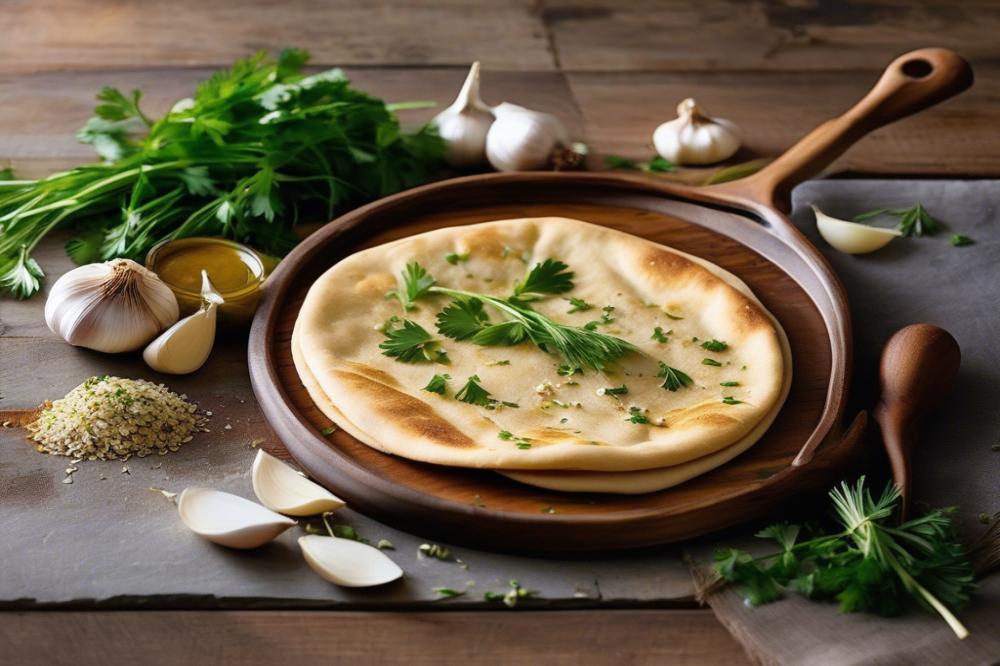Exploring the Delights of Lebanese cuisine
Lebanese cuisine offers a vibrant tapestry of flavors, traditions, and textures. This Mediterranean fare is known for its rich history and diverse culinary techniques. In every household, food is a way of expressing love and hospitality. One dish that stands out among the many is stuffed cabbage.
Stuffed cabbage rolls have become a beloved favorite, cherished for their comforting nature. Families across Lebanon often gather to prepare this meal, passing down cherished recipes that reflect regional tastes. Each roll is a bundle of joy, filled with aromatic spices and wholesome ingredients. These meals not only provide sustenance but also bring people together.
The spices used in this dish play a significant role in developing its signature taste. Common choices include cinnamon, allspice, and nutmeg, harmonizing with bright herbs like parsley and mint. Together, they create layers of flavor that are enticing and satisfying. When paired with rice, ground meat, and sometimes a hint of tomato, the result is nothing short of delicious.
Throughout this article, we will delve into the essential cooking techniques involved. We will share a cabbage rolls recipe that is sure to become a family favorite. Additionally, the unique ingredients, health benefits, and variations in preparation will be explored. Prepare to embark on a culinary journey that celebrates the heart of Lebanese cuisine!
Lebanese stuffed cabbage rolls: Ingredients and Cooking Instructions
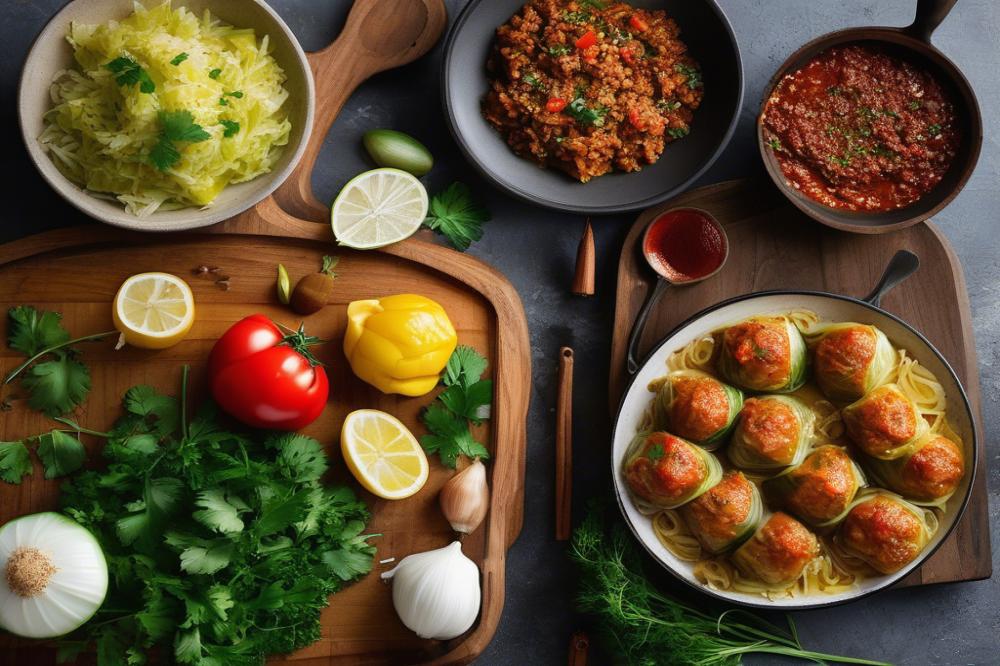
To create delicious Lebanese stuffed cabbage rolls, you will need a variety of fresh ingredients. The recipe makes use of common items found in many kitchens. Gather the following:
- 1 large head of cabbage
- 1 cup of rice
- 500g ground beef or lamb
- 1 large onion, finely chopped
- 2 tablespoons tomato paste
- 1 teaspoon allspice
- 1 teaspoon cinnamon
- 1 teaspoon salt
- 1/2 teaspoon black pepper
- 1/4 cup fresh parsley, chopped
- 1/4 cup fresh mint, chopped
- Juice of 1 lemon
- 4 cups vegetable broth or water
The cooking process begins with preparing the cabbage. First, boil the head until the leaves become tender. This will take a few minutes, but it helps make it easy to roll. After the cabbage is ready, mix the rice, ground meat, chopped onion, tomato paste, and all the spices in a large bowl. The combination of spices brings a rich flavor to this Mediterranean dish.
Next, take each softened leaf and place a spoonful of the mixture onto it. Tuck in the sides and roll it up tightly, like a small burrito. Make sure to secure each roll properly. These rolls fit well in any pot.
Arrange the rolls neatly in a pot. You can layer them neatly if necessary. Pour the vegetable broth over the rolls and bring to a simmer. Cover the pot and let it cook for 1 to 2 hours. This slow cooking technique ensures the flavors meld together beautifully.
When ready to serve, these stuffed cabbage rolls can be enjoyed with a squeeze of fresh lemon juice and a side of yogurt. These add extra zing and creaminess to your meal. This recipe not only highlights ingredients like cabbage and rice but also stands out as comforting comfort food in many Middle Eastern dishes.
In terms of nutritional information, each key ingredient contributes uniquely. Cabbage is low in calories but high in fiber. Rice provides a necessary source of carbohydrates. Ground meat is rich in protein, making it a hearty choice. Finally, fresh herbs like parsley and mint improve the vitamin content of this dish and add fresh flavor.
Different variations of stuffed cabbage exist within Lebanese cuisine, with some families opting to use grape leaves instead of cabbage. Many Mediterranean recipes also explore similar fillings, showcasing the versatility of spices and cooking techniques. As you experiment with this family recipe, remember that food is not just about nourishment; it is about sharing and creating memories.
The Cultural Significance of Stuffed Cabbage in Lebanese Cuisine
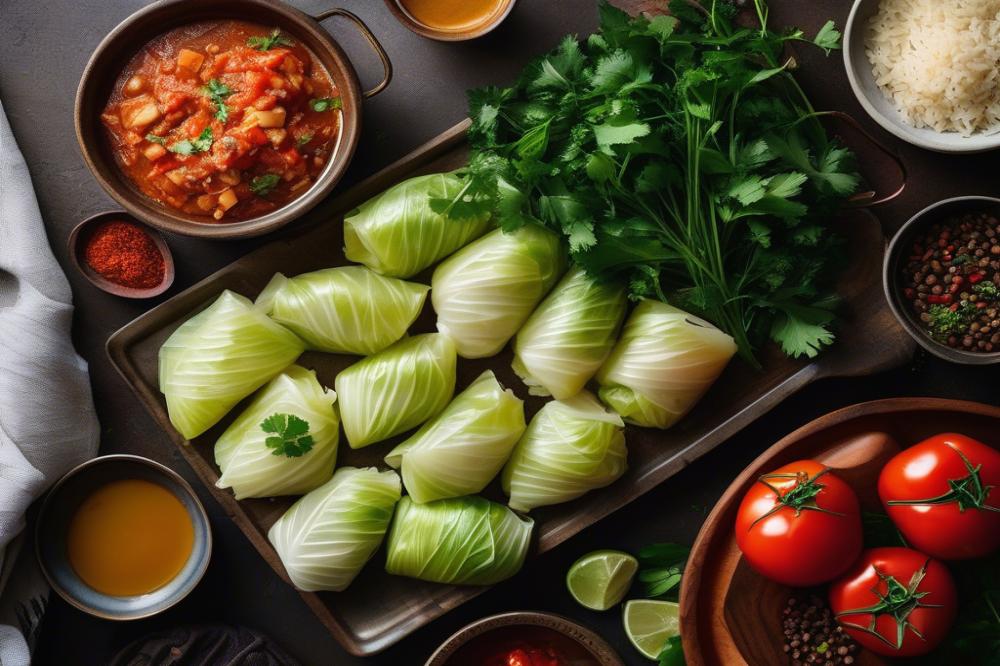
Stuffed cabbage holds a special place in Lebanese food traditions. These rolls often appear at family gatherings and festive occasions. Serving this dish is a way to show love and care. Friends and family gather around the table to enjoy a meal that symbolizes togetherness. Each bite evokes memories of shared laughter and joy.
Often considered a comfort food, stuffed cabbage has a warm and hearty appeal. As a staple within Middle Eastern dishes, it shines alongside other favorites like grape leaves. Lebanese cuisine thrives on diverse flavors and ingredients. This dish is no exception, filled with rice and meat, seasoned with various spices. Common spices include cinnamon and allspice, giving it a remarkable taste.
Many regions in Lebanon have their own versions of stuffed cabbage. Some families might prefer a vegetarian filling, while others stick to traditional meat. Variations also arise from different cooking techniques. For instance, some might slow-cook the rolls for a tender texture, while others opt for a quicker method. This diversity reflects the rich culinary heritage of Lebanese cuisine.
Healthy meals are also a part of this dish’s charm. Stuffed cabbage can be packed with nutritious ingredients like lean meat and leafy greens. Families often pass down cherished family recipes from generation to generation. Each family adds its twist, ensuring that every recipe is unique in flavor and presentation.
Exploring the variations of stuffed cabbage reveals much about Lebanon’s gastronomy. The Mediterranean recipes found here tell stories of cultural influences and historical exchanges. Each roll is not only a meal but a slice of Lebanon’s rich culinary identity. Sharing such dishes fosters community and connection, making stuffed cabbage a truly beloved recipe in Lebanese homes.
Cooking Techniques and Tips for Perfect Stuffed Cabbage Rolls
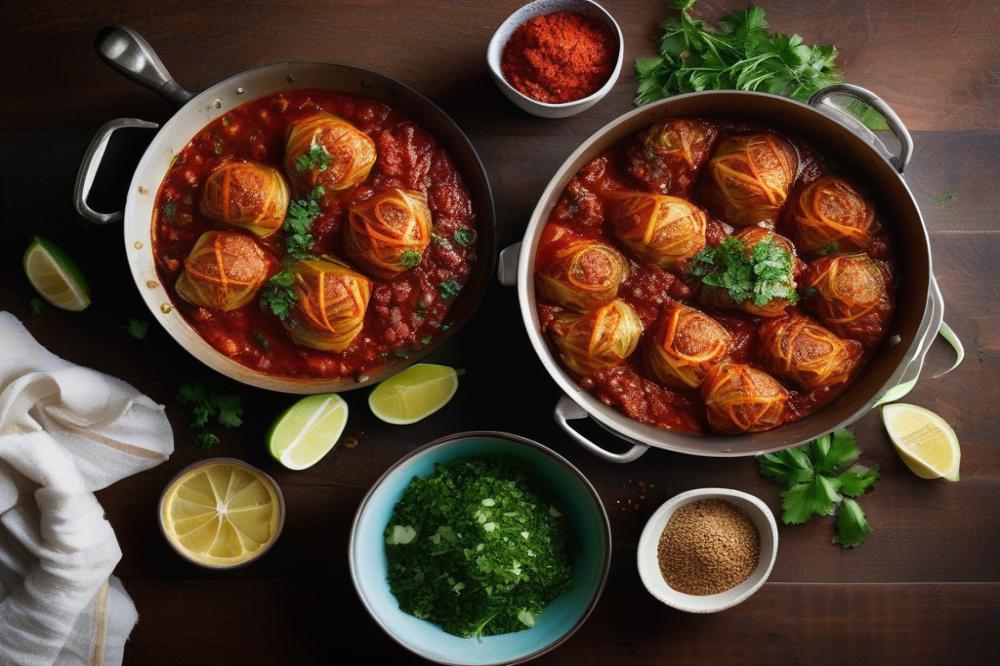
Making stuffed cabbage can seem daunting at first. However, with the right cooking techniques, anyone can create this delightful dish. First, choosing the right cabbage is essential. Look for a large head that feels heavy for its size. A tight structure helps in preparing whole leaves for rolling.
To prepare the leaves, start by blanching the cabbage. This process makes them more pliable. Boil a large pot of water. Carefully add the cabbage and let it cook for just a few minutes until the outer leaves soften. Check regularly. Once you notice leaves are tender, remove them and place in ice water to stop the cooking.
Now onto the filling. This part is crucial for flavor. Use a mix of ground meat, rice, and plenty of spices. Common spices used in Lebanese cuisine include cumin, cinnamon, and allspice. Adjust based on your preference. Adding herbs like parsley and mint brightens the dish. The balance of flavors is key for an enjoyable experience.
Rolling the leaves can take some practice. Start by placing a small amount of filling at the base of a leaf. Fold the sides over the filling, then roll tightly from the bottom up. This technique helps prevent the filling from leaking during cooking. A tightly rolled cabbage leaf is a happy one.
When cooking, consider the method. You can either simmer the rolls in a pot or bake them in the oven. Both methods bring different flavors to the dish. If you choose the pot, add a tangy tomato sauce. Let the rolls cook in medium heat for a couple of hours. This allows all the flavors to meld together nicely.
For baking, place the rolls in a dish and pour a sauce over them. Cover with foil to create steam while baking. Allow them to cook until everything is heated through. With this method, the rolls gain a rich caramelized flavor.
Finally, don’t underestimate the power of seasoning. Adjust the salt and pepper to taste throughout. A sprinkle of lemon juice before serving brightens the flavors. It’s these little details that make stuffed cabbage a beloved comfort food in Middle Eastern dishes.
Incorporating grape leaves is another option. Stuffed grape leaves provide a different texture and taste while still being part of Mediterranean recipes. Each family has variations. Swap different meats or create vegetarian options for healthy meals that everyone can enjoy.
Exploring Variations: Stuffed Cabbage and its Mediterranean Counterparts
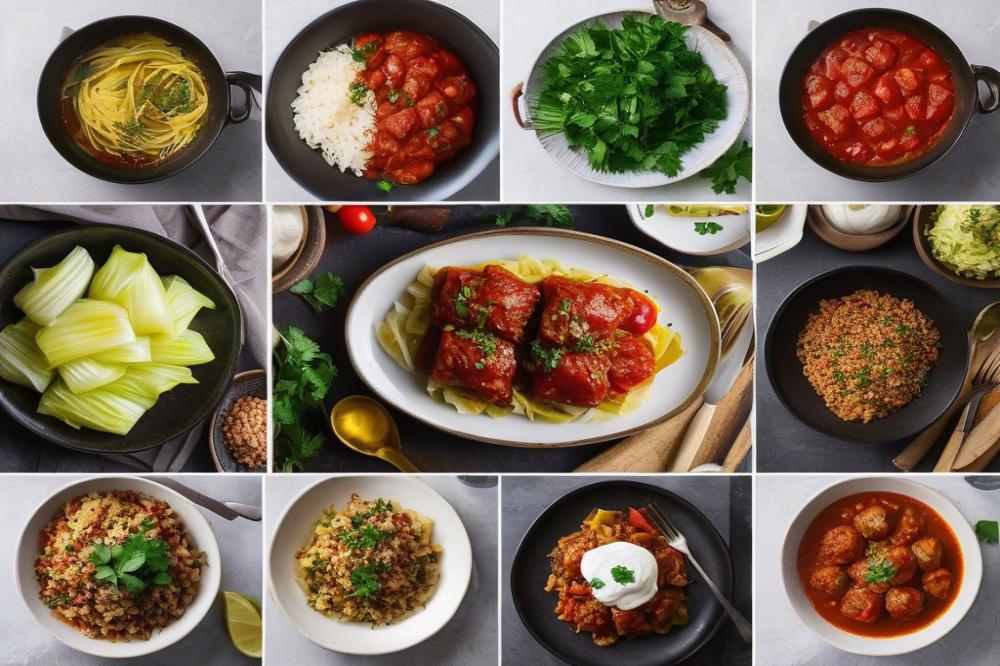
Many cultures across the Mediterranean have their own versions of stuffed cabbage. In addition to Lebanese cuisine, there are delightful options like grape leaves filled with rice and meat. These dishes reflect a rich tradition of using fresh ingredients and healthy meals, making them popular. Each recipe tells a different story based on local flavors and family recipes.
In Greece, a famous dish is called dolmades, which are grape leaves stuffed with a mixture of rice, pine nuts, and herbs. Common spices include dill, mint, and lemon juice. The flavor profile differs from the Lebanese stuffed cabbage rolls, where spices like allspice and cinnamon take center stage. These ingredients give a warm, comforting flavor that is often found in Middle Eastern dishes.
Turkish cuisine also offers a variation called sarma, where grape leaves are similarly filled. People might use ground lamb or beef, along with various spices that enhance the taste. Cooking techniques vary slightly too; some nations simmer their stuffed leaves in a flavorful broth while others bake them. This diversity showcases how individuals adapt recipes to their specific tastes and cultural influences.
Another variation comes from Eastern Europe, where stuffed cabbage is a comfort food staple. This dish often features sauerkraut and a hearty meat filling. Spices may include paprika, which adds a smokey flavor. This isn’t typically found in Lebanese recipes, which focus more on fresh herbs and spices. The blend of flavors makes each family’s recipe special.
Ultimately, exploring these recipes highlights how ingredients like rice, meat, and spices are shared among different cultures. Even though they may look similar, each recipe has its own unique spin. Whether it’s the herbs in grape leaves or the spice combination in Lebanese rolls, these dishes connect people through food.
Health Benefits of Lebanese Stuffed Cabbage Rolls
Lebanese cuisine offers many delicious dishes, and stuffed cabbage rolls are a highlight. These rolls combine cabbage with various wholesome ingredients. They are not just tasty; they provide essential nutrients that help maintain a balanced diet.
The primary ingredient, cabbage, is rich in vitamins C and K. This leafy vegetable also contains fiber, which is vital for digestive health. Including fiber in meals promotes regular digestion and can help control weight. It’s easy to see why stuffed cabbage is not just comfort food but also a smart choice.
Ground meats commonly used in the filling offer protein, a nutrient essential for muscle repair and overall health. Lean meats can be a good source of iron, supporting energy levels and active lifestyles. Spices added, like cumin and coriander, not only flavor the dish but can also have health benefits. These spices may help with digestion and even have anti-inflammatory properties.
Incorporating grape leaves instead of cabbage is another option. Grape leaves provide similar benefits with added unique flavors. They are also low in calories and packed with nutrients. When using these leaves, each serving offers a light alternative that fits well within healthy meals.
The combination of ingredients in these Middle Eastern dishes showcases the principles of the Mediterranean diet. This diet emphasizes whole foods, healthy fats, and lean proteins. Stuffed cabbage aligns with these values, making it an excellent choice for anyone aiming for a nutritious lifestyle.
Cooking techniques play a role as well. When baked or simmered slowly, these rolls absorb flavors while keeping the ingredients tender. Such methods enhance taste without adding unhealthy fats. Thus, they are a smart comfort food option that supports healthy eating.
Family recipes often pass down for generations. They not only bring families together but also highlight the importance of enjoying homemade meals. Preparing stuffed cabbage rolls can strengthen bonds through shared experiences in the kitchen. Each bite carries a story, making meals more meaningful.
Adding stuffed cabbage to regular meals supports a diverse diet. This dish can be part of lunch or dinner and serves as a satisfying option for various occasions. Whether served fresh or as leftovers, the flavors often improve over time, reinforcing that eating well can be enjoyable.
The Heart of the Dish
In summary, Lebanese stuffed cabbage rolls hold a special place in the world of Lebanese cuisine. They represent the essence of family gatherings and cherished traditions. Each roll is a blend of flavors and cultures, showcasing the hearty ingredients that define this beloved dish. Cooking them is not just about the recipe; it’s about the stories shared during the process.
Many variations exist within this dish, allowing for personalization that reflects one’s taste. Whether you prefer a meat-filled center or a vegetarian option brimming with spices, stuffing the cabbage leaves opens up endless possibilities. Each family may have its own secret touch, making these rolls a unique experience every time they are prepared.
Trying your hand at making stuffed cabbage can be a delightful adventure. Enjoy the process of rolling the leaves, letting your hands create something delicious. As you cook, you may find joy in passing down your own recipes, just as many have done before you. Embrace the flavors, the aromas, and the time spent in the kitchen. This dish is not just a meal; it is a connection to a rich culinary heritage. So why not gather some ingredients and start rolling? You might discover a new favorite tradition right in your own home.

